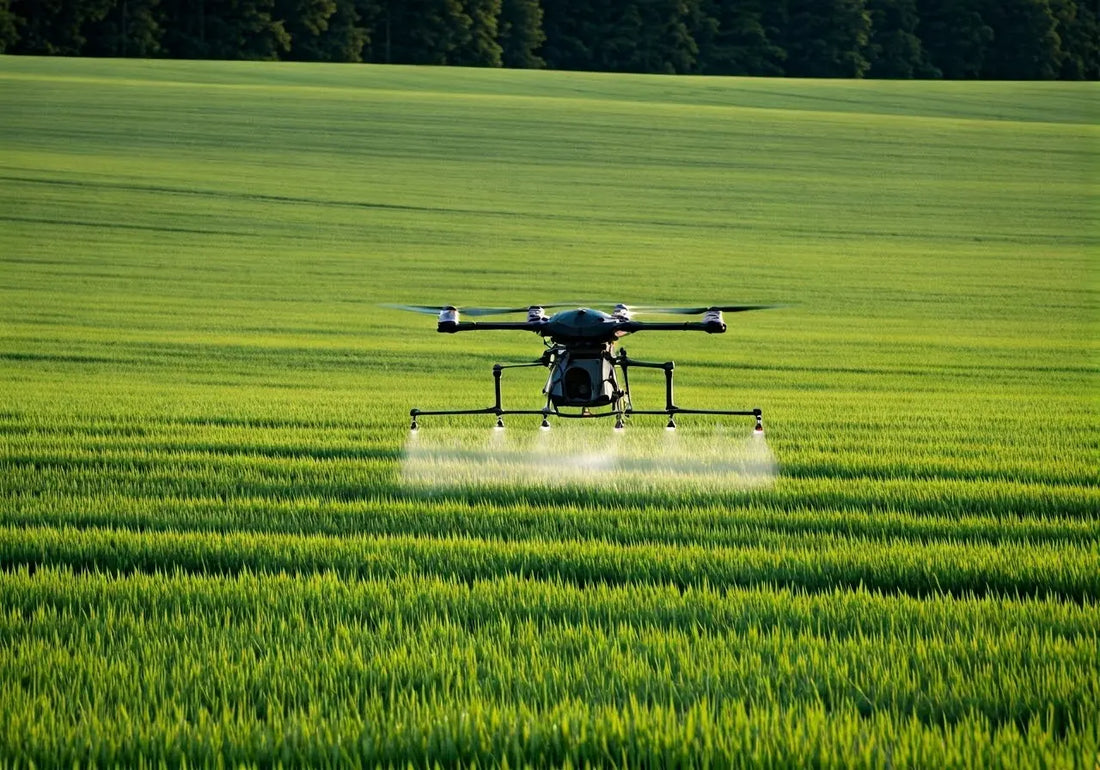
What Are the Benefits of Using Agricultural Drones in Spraying?
Share
Agricultural drones are transforming the landscape of modern farming, offering innovative solutions to age-old challenges. One of the most exciting applications of these drones is their use in spraying. In this blog, we’ll explore the multitude of benefits that agricultural drones bring to the table when it comes to spraying crops. From increased efficiency to safety improvements, discover why farmers are increasingly adopting this technology.
Improved Precision and Accuracy
Agricultural drones are equipped with advanced GPS and mapping software, allowing them to spray crops with pinpoint accuracy. This precision ensures that each area receives the exact amount of coverage needed, reducing waste and improving yields. Unlike traditional methods, drones can navigate complex terrains and adapt to varying crop layouts, making them incredibly versatile inprecision farming.
Additionally, by utilizing high-resolution cameras and sensors, drones can identify areas requiring more attention, such as pest-infested zones or nutrient-deficient spots. This ability to provide real-time data allows for immediate corrective actions, thus optimizing farm output. The DJI Agras series exemplifies this capability, offering tailored solutions that cater to differing crop needs and ensuring that no resource is wasted.
The precision offered by drones is not just about applying chemicals accurately; it’s also about optimizing the timing. By timing sprays to the exact moment of need, farmers ensure maximum effectiveness while minimizing crop stress. This technology-driven approach advances crop health monitoring to an entirely new level, supporting both high yield and high quality produce.
Enhanced Efficiency and Speed
Drones can cover large areas of farmland quickly, significantly faster than traditional methods. This increased efficiency means that farmers can complete spraying tasks in a fraction of the time, freeing them to focus on other crucial aspects of farm management. In comparison to labor-intensive ground spraying, drones traverse the fields at high speeds, all while maintaining their precision.
The time savings are particularly beneficial during crucial agronomic windows where immediate action is needed—such as before a predicted rainfall or pest outbreak. With the help of drone trailers, farmers can maximize mobility, allowing rapid response across expansive and varied fields without the lag time associated with traditional methods.
Cost-Effectiveness
Using agricultural drones can reduce the need for manual labor and heavy machinery, which can be costly to maintain and operate. Over time, this translates to significant savings and a more streamlined operation. Although the initial investment in drone technology might seem steep, its ability to cut down labor costs and improve resource efficiency quickly balances the scales.
When factoring in reduced input costs—from chemicals to labor—the financial benefits become clear. The precision of drones often means utilizing fewer resources to achieve better results, ensuring that every dollar spent contributes to the production outcome. This advantageous cost-to-benefit ratio positions drones as not merely a practical choice but a strategic financial investment in modern agriculture.
Reduced Environmental Impact
With targeted spraying, drones minimize chemical runoff into surrounding areas, promoting a healthier ecosystem. They also use less fuel compared to traditional spraying equipment, reducing the carbon footprint of farming operations. By allowing for precise application only to areas in need, the amount of chemicals used decreases significantly, leading to a more responsible approach to pesticide application.
This targeted methodology often translates to healthier crops and less environmental degradation. As drones swoop in to address critical hot spots directly, they reduce the collateral impact on bio-diversity around farms. The environmental advantages of this precision are evident in the preservation of beneficial insects and pollinators, ultimately supporting a balanced ecosystem.
Enhanced Safety for Farmers
Operating drones remotely means that farmers are not in direct contact with potentially harmful chemicals, significantly reducing health risks. This makes the spraying process safer for the individuals involved. Whether it’s a hot Indian summer day or amid pouring rain, drones spare farmers the toil of potentially hazardous conditions.
Moreover, by keeping pesticides off the skin and out of the lungs, drones bring peace of mind alongside their operational benefits. Reduced exposure to chemicals also translates to better long-term health outcomes for farm workers, reflecting a broader commitment to safe agricultural practices across the globe.
Embracing the Future of Farming with Drones
In summary, agricultural drones offer a suite of benefits that enhance both productivity and sustainability on the farm. From their precision and efficiency to the environmental advantages they present, these high-tech tools are reshaping the way farmers approach spraying. As drone technology continues to advance, their role in agriculture will only grow, making it an essential tool for the future of farming. For more about the transformative impact of this technology, visit TJ Aerosense.

